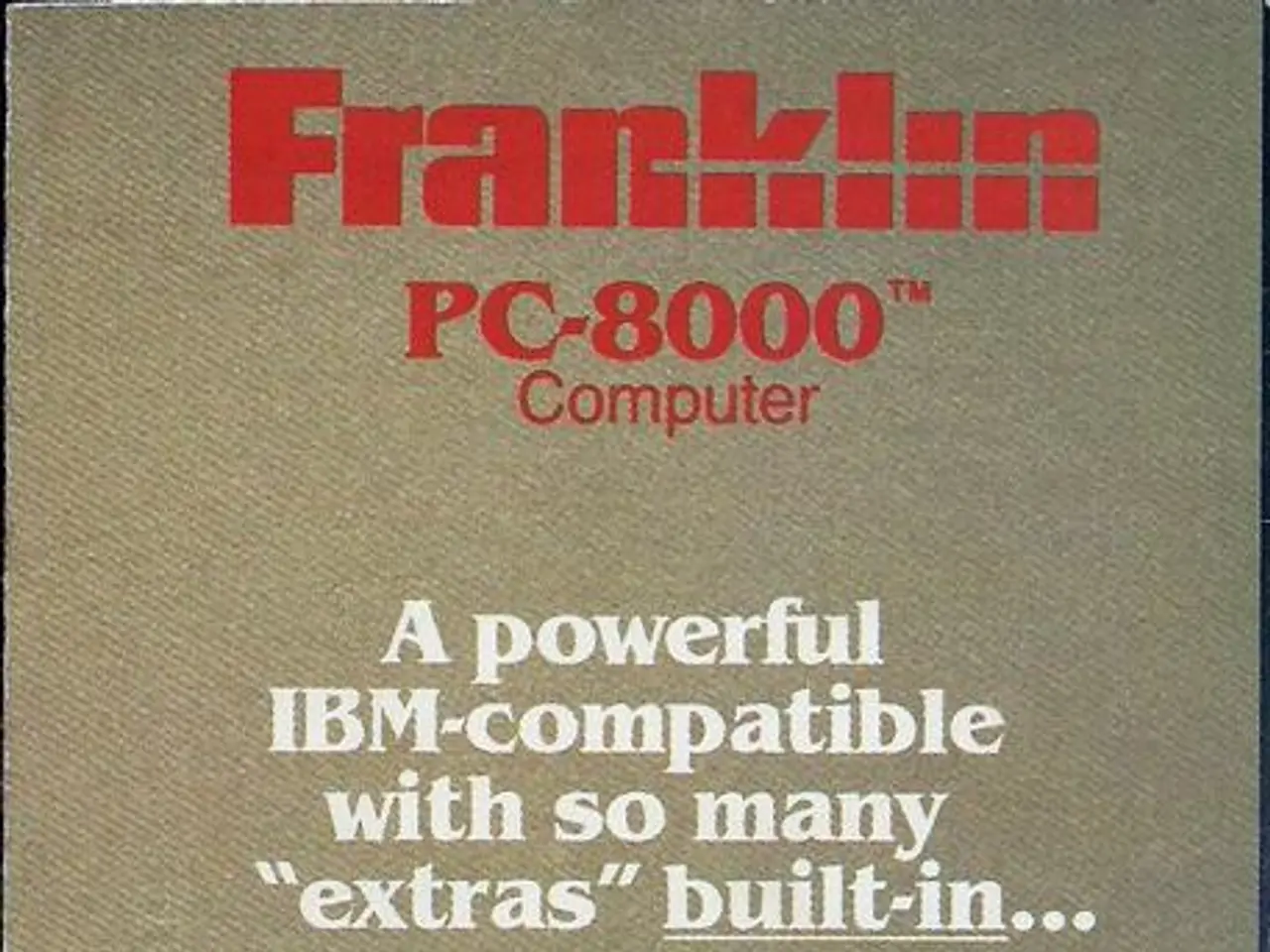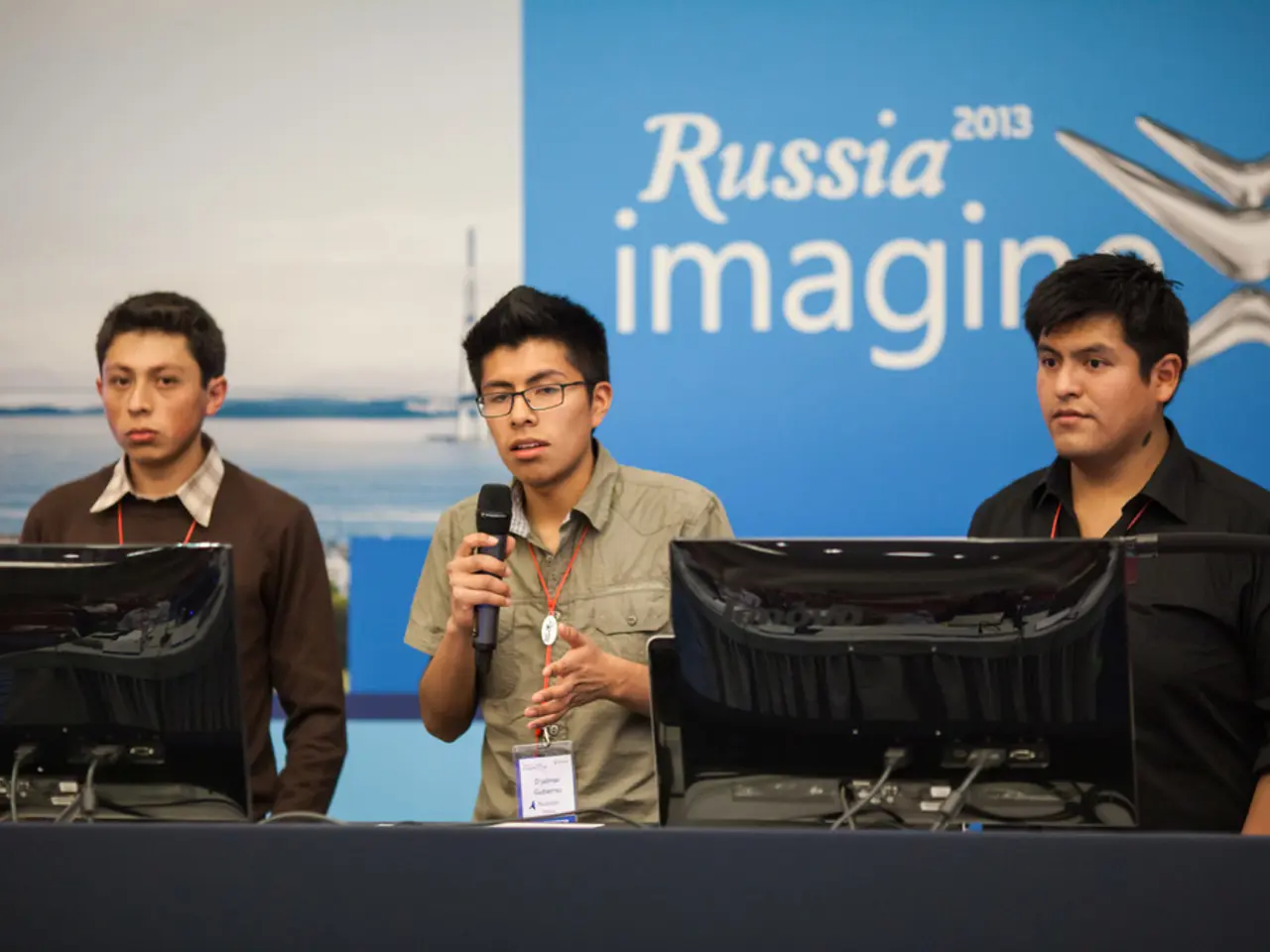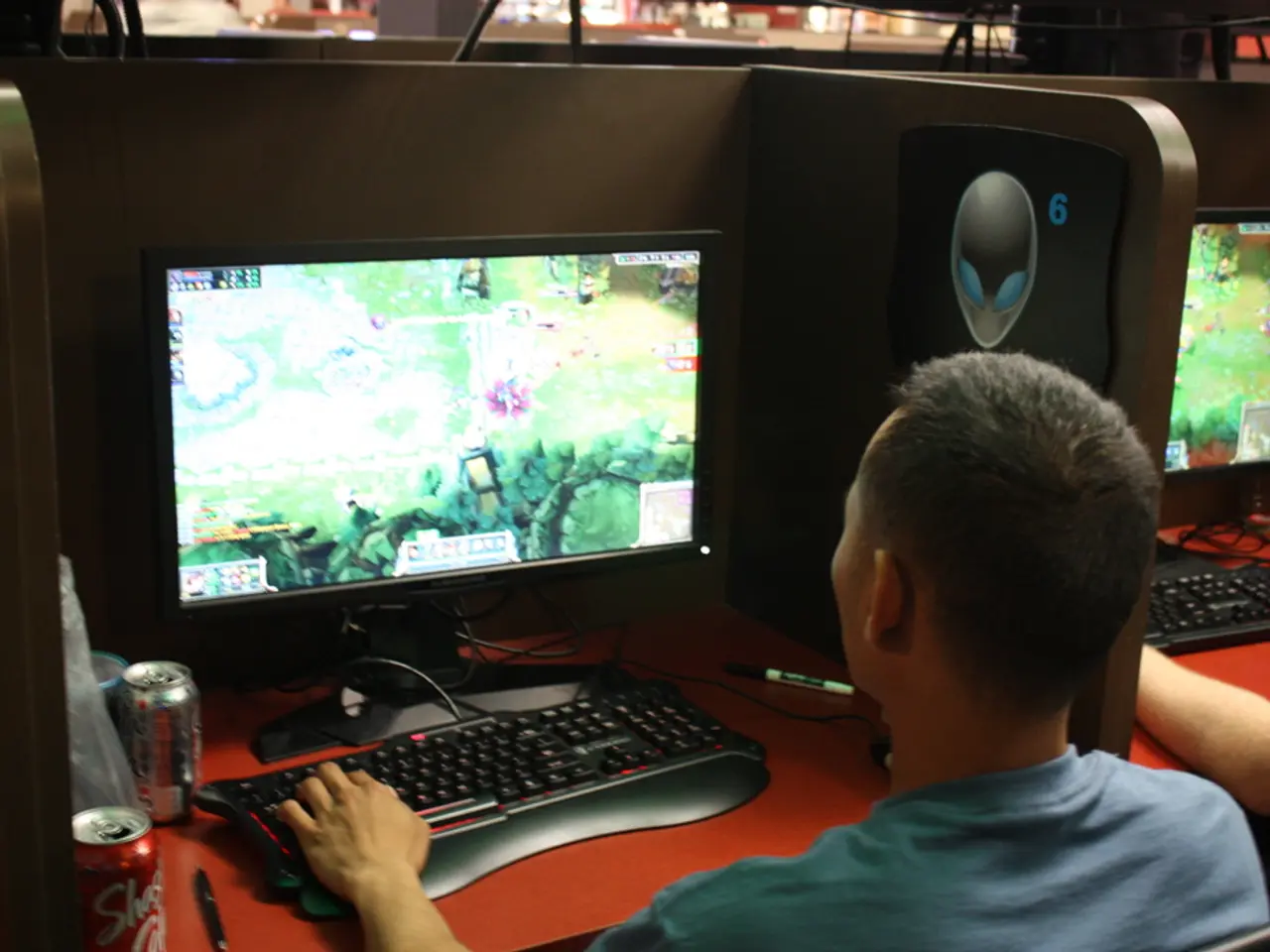Protecting Intellectual Property Rights in Artificial Intelligence-Crafted Creations
In the realm of technology and creative industries, the legal landscapes of two global powerhouses - the USA and the UK - are undergoing a significant comparison. This comparison, with its differing approaches, has far-reaching implications for the future of AI-generated works.
In the United States, the human-made aspects of AI-generated works, such as "prompt instructions," are eligible for copyright protection. However, any output from AI itself is not. This stance is based on the U.S. Copyright Office's (USCO) clarification that works created with substantial AI input are not eligible for copyright protection in the United States.
On the other hand, the United Kingdom’s copyright law explicitly recognizes computer-generated works and provides copyright protection for them. The authorship, however, is attributed to the human who made the necessary arrangements for the creation of the work. This "person" is generally interpreted as the human who prepared or controlled the AI’s creation process, such as the programmer or the person who commissioned the work.
This legal divergence between the two countries is significant. In the USA, works created solely by artificial intelligence without significant human authorship are not eligible for copyright protection. Conversely, in the UK, copyright can exist in AI-generated works attributed to the human who arranged or caused the creation, even if no direct human authorship of the creative content itself is present.
The debate surrounding AI-generated artistic content and copyright law is far from over. Some legal theorists argue that the proliferation of private rights in AI-generated output may stifle innovation due to fear of encroaching on someone else's copyright. Others, however, argue that the directive and curatorial instructions used to guide AI tools require skilled labor and judgment that is worthy of recognition and protection.
This dichotomy raises questions about the originality required for copyright to apply in AI-generated works, a question that remains unclear in UK law. Moreover, the use of copyrighted material to train AI models is another legal debate that is ongoing in the US, with recent court decisions granting narrow victories to AI companies but leaving the broader legal framework unresolved.
As the use of technology to create art continues to evolve, it is crucial to acknowledge the potential policy harms and benefits of each approach. While innovation-focused policy makers may view the ability to own and license AI-assisted creations as favorable to economic growth, it is equally important to consider the likely impacts of AI-generated work on the lives and livelihoods of creators.
This is a rapidly evolving field, with scholars like Professor Dave O'Brien at the University of Manchester, Dr Josh Siepe, Kristofer Erickson, and Dr Ruoxi Wang, among others, conducting research on various aspects of this issue, including class inequalities in film funding, the self-employed workforce, and the co-location of the Creative Industries with other industrial strategy priority sectors.
As we navigate this new frontier, it is essential to approach these issues with an open mind, recognising the potential benefits and challenges that AI-generated works may bring to the creative industries.
[1] Thaler, V., & Perlmutter, E. (2019). The Algorithmic Authorship of Works of Verse: A Copyright Law Perspective. Harvard Journal of Law & Technology, 32(2), 385-448. [2] Allen, J. (2018). Portrait of an Artist (Playing with Fire): The Making, Meaning, and Machine of an AI-Generated Painting. Harvard Journal of Law & Technology, 31(2), 385-448. [3] Google LLC v. Oracle America, Inc., 960 F.3d 1179 (Fed. Cir. 2020). [4] Copyright, Designs and Patents Act 1988 (UK), s.178.
- The comparison of technology and creative industries' legal landscapes in the USA and the UK has far-reaching implications for AI-generated works, inspiring discussions about copyright eligibility for such works.
- In the USA, substantial AI input disqualifies works from copyright protection, with exceptions given to human-made prompt instructions. Conversely, UK law recognizes and protects copyright in computer-generated works, attributing authorship to the human who arranged or caused the creation.
- The differing approaches to AI-generated works between these two global powerhouses have sparked debates in the legal realm, with arguments for and against the proliferation of private rights in AI-generated output.
- The dichotomy in the originality required for copyright in AI-generated works, as well as the use of copyrighted material to train AI models, remains a complex legal issue, particularly in the USA.
- As innovation and economic growth are incentivized by policies allowing AI-assisted creation ownership, it's equally important to consider the potential impacts on creators' lives and livelihoods.
- Scholars like Professor Dave O'Brien, Dr Josh Siepe, Kristofer Erickson, and Dr Ruoxi Wang, among others, are conducting research on various aspects of this issue, including class inequalities in film funding, self-employment, and the co-location of the Creative Industries with other industrial strategy priority sectors.
- To approach this rapidly evolving field with an open mind, it is essential to acknowledge both the potential benefits and challenges that AI-generated works may bring to the creative industries.
- Relevant literature like Thaler & Perlmutter's (2019) "The Algorithmic Authorship of Works of Verse," Allen's (2018) "Portrait of an Artist (Playing with Fire)," and the Google LLC v. Oracle America, Inc. (2020) court decision can provide valuable insights into this evolving field.




